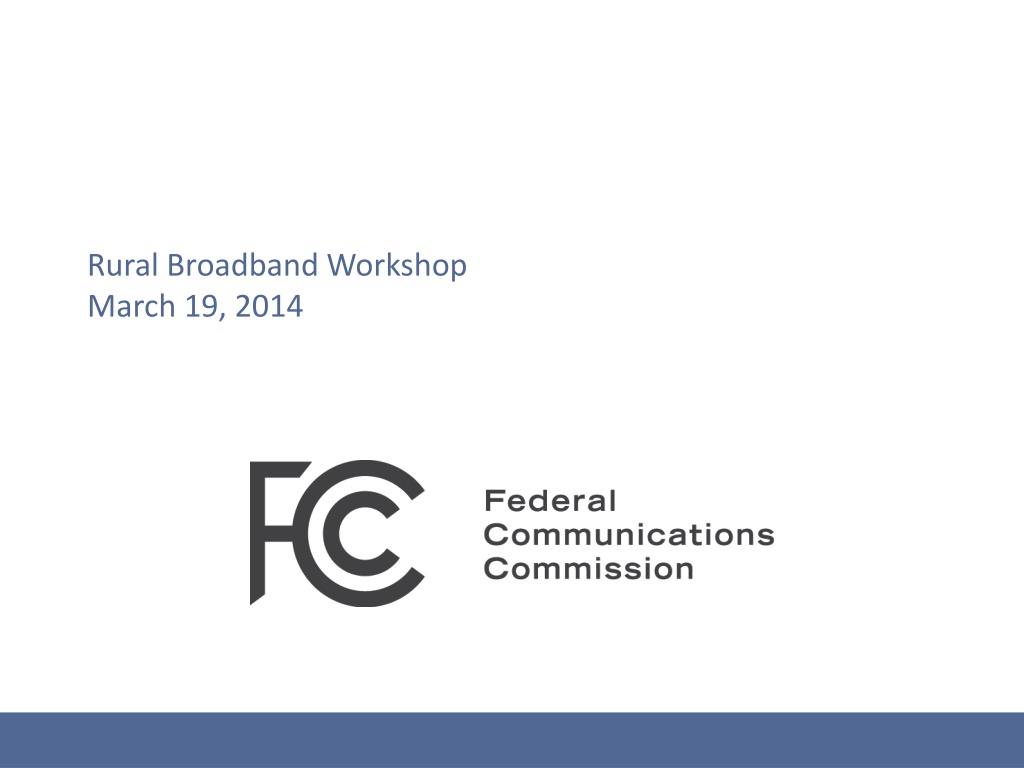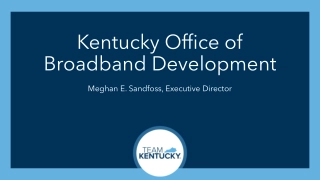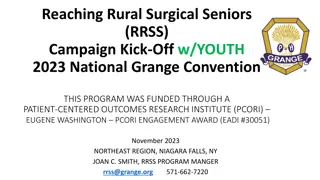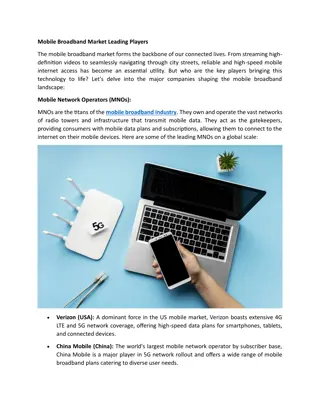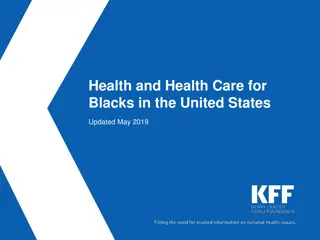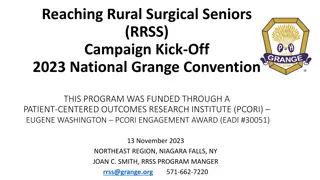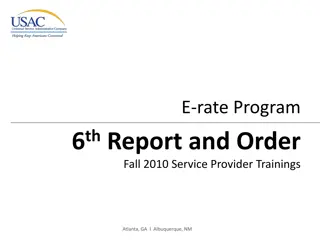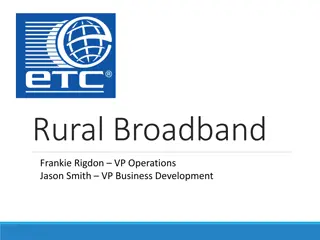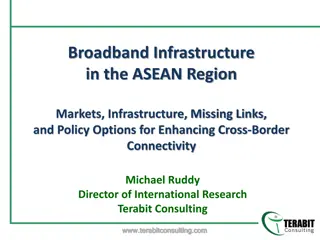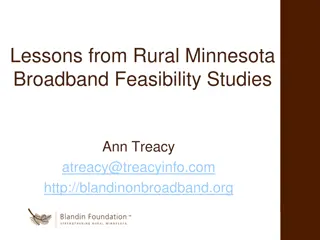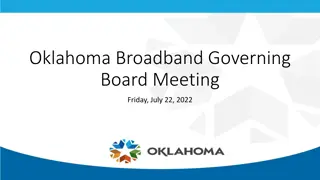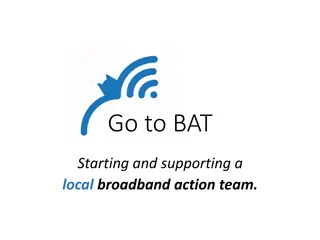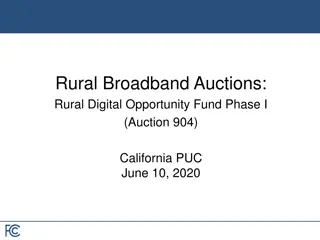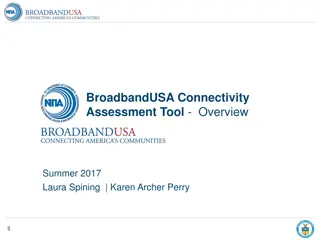Rural Broadband Disparities in the United States
Rural broadband access and the definition of rural areas are explored through images and text, shedding light on the challenges faced in providing high-speed internet connectivity to remote communities. The data presented highlight disparities between urban and rural areas, emphasizing the importance of bridging the digital divide for equitable access to communication infrastructure.
Download Presentation

Please find below an Image/Link to download the presentation.
The content on the website is provided AS IS for your information and personal use only. It may not be sold, licensed, or shared on other websites without obtaining consent from the author.If you encounter any issues during the download, it is possible that the publisher has removed the file from their server.
You are allowed to download the files provided on this website for personal or commercial use, subject to the condition that they are used lawfully. All files are the property of their respective owners.
The content on the website is provided AS IS for your information and personal use only. It may not be sold, licensed, or shared on other websites without obtaining consent from the author.
E N D
Presentation Transcript
Rural Broadband Workshop March 19, 2014
What does rural mean? Uncle Sam has more than a dozen answers. By David A. Fahrenthold, Published: June 8, 2013 Lenoir is a small town in western North Carolina. It has 18,000 people, a Wal-Mart, a Waffle House and an annual parade famous for people carrying pans of blackberry cobbler. Is it a rural place? The U.S. government has an answer: Yes. No. Yes. Yes. No. No. No. Yes. No. No. No. No. No. 2
Urban Rural 96% % land 4% 21% % homes 79% Urban includes Urbanized areas : densely settled areas of 50,000 people or more Urban clusters: densely settled areas of at least 2,500 people that are not urbanized areas 3
% locations without fixed broadband with downstream of at least % locations without mobile broadband 3 Mbps 16.5 0.6 Urban Rural 29.9 10 Mbps 4.5 1.7 0.3 Urban Rural Urban Rural 56.2 50 Mbps 11.9 Urban Rural 4
79% 21% Urban Urban Rural 96% % land 4% 21% 21% 79% 79% % homes Urban Rural 5
Metropolitan Statistical Area (MSA) Census Designated Place (CDP) 79% 9% 21% 79% 21% non- MSA Non- CDP 14% 53% 76% MSA 91% CDP 86% 47% 24% Urban Rural Urban Rural A large population nucleus, together with adjacent communities having a high degree of social and economic integration with that core A statistical entity including municipality, city, town village, borough, town/ township, community, neighborhood, postal place, populated place, areas associated with a specific name 6
Urban % locations without fixed broadband with downstream of at least Rural 24.0 3 Mbps 20.1 19.2 16.5 7.6 5.4 2.3 0.6 0.4 1.5 All areas MSA and CDP No CDP No MSA No MSA No CDP 41.9 36.8 33.4 29.9 10 Mbps 15.5 9.1 6.2 1.7 2.8 1.0 All areas MSA and CDP No CDP No MSA No MSA No CDP 68.5 66.9 56.2 57.0 43.3 35.3 50 Mbps 29.7 11.9 12.1 9.4 All areas MSA and CDP No CDP No MSA No MSA No CDP 7
